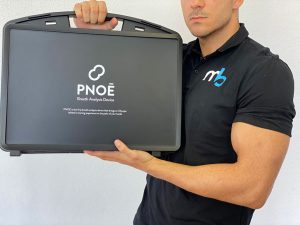What does it mean and how do we monitor it?
Metabolism is the totality of chemical reactions in the body.
Or we can say it a little more bluntly like this:
Metabolism means all the biochemical and energetic transformations that take place in the tissues of the living organism.
Metabolism is a complex process, which involves exchange of matter and energy, and which includes two (simultaneous) opposite processes:
- catabolism or disassimilation or Destruction (e.g. catabolism of fatty acids) – all the chemical processes of degradation of substances in the body;
- anabolism or assimilation or Construction /growth (e.g. increase in muscle mass) – the chemical processes of biosynthesis of substances that make up living matter.
 Basically, metabolism is the total energy used to create all the life-sustaining processes in the body.
Basically, metabolism is the total energy used to create all the life-sustaining processes in the body.
The metabolism represented by energy consumption strictly for basal processes is called basal metabolism . This is a maintenance metabolism, which provides the minimum energy necessary to maintain vital functions (circulation, breathing, etc.) and takes place in conditions of complete rest.
Antoine Lavoisier (1743 – 1794) states for the first time that Breathing is actually combustion.
Food + O2 ➔ Co2 +H2O
“Nothing is lost, nothing is created, everything is transformed.”
In short, we all know that we inhale O2 (oxygen) and exhale CO2 (carbon dioxide). And the most important thing when we want to reduce adipose tissue (fat) is to “burn” fatty acids, so the process will look like this:
Fatty acids + O2 ➔ Co2 + H2O
We always Inhale O2, which helps us in biochemical processes, attach a carbon atom to its back and expel it. Basically, that carbon that we bind to O2 and eliminate represents the waste from the energy substrate used by the body for its metabolic processes.
Pnoe is a device that is equipped with a CO2 detection sensor, so it calculates exactly how many CO2 molecules (by default how many C atoms) are exhaled and thus knows how many calories the body burns with each exhalation.
Pnoe provides us, nutritionists/dietitians/doctors, with accurate data on lung capacity and basal metabolic rate or/and metabolic rate during training (in relation to heart rate, which is also monitored). With this information we can create a perfect diet for each individual.
The Pnoe equipment also helps us in detecting a low (pathological) metabolism, either due to hormonal causes (thyroid gland, for example), or due to the multiple diets found on the Internet that have negatively modified the basal metabolic rate to ensure the survival of the body. Thus, by testing the patient monthly, we can keep under observation any changes in the metabolic rate.



